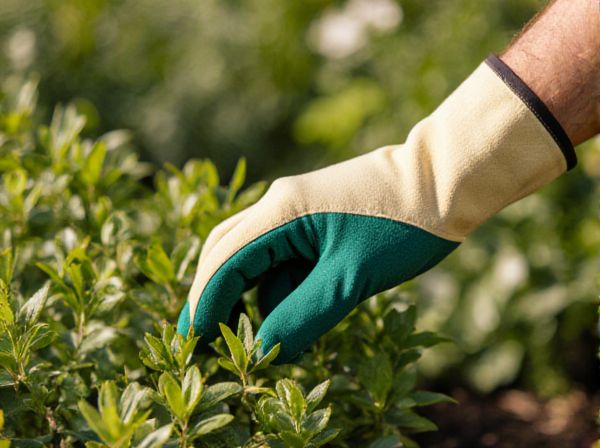
South-facing garden vs north-facing garden Illustration
A south-facing garden receives abundant sunlight throughout the day, promoting the growth of sun-loving plants and creating a warm, vibrant outdoor space. In contrast, a north-facing garden gets limited direct sunlight, resulting in cooler conditions that favor shade-tolerant plants and create a tranquil, shaded retreat. Choosing the right orientation impacts plant health, garden design, and overall atmosphere.
Table of Comparison
| Aspect | South-Facing Garden | North-Facing Garden |
|---|---|---|
| Sunlight Exposure | High, direct sunlight most of the day | Low, limited direct sunlight |
| Plant Growth | Ideal for sun-loving plants | Better for shade-tolerant plants |
| Temperature | Warmer microclimate | Cooler microclimate |
| Maintenance | Requires frequent watering | Less watering needed |
| Outdoor Living | Longer sun hours for activities | Shaded, cooler space |
Understanding Sunlight: The Basics of Garden Orientation
South-facing gardens receive the most sunlight throughout the day, making them ideal for sun-loving plants and maximizing photosynthesis. North-facing gardens get limited direct sunlight, resulting in cooler, shadier conditions that favor shade-tolerant species. Understanding garden orientation helps optimize plant selection and garden design for healthy growth and vibrant landscapes.
South-Facing Gardens: Maximizing Sun Exposure
South-facing gardens receive the highest amount of sunlight throughout the day, making them ideal for growing sun-loving plants such as tomatoes, lavender, and sunflowers. These gardens benefit from longer exposure to direct sunlight, which enhances photosynthesis and promotes robust plant growth and flowering. Optimizing plant placement in a south-facing garden ensures maximum solar energy capture, leading to healthier and more productive vegetation.
North-Facing Gardens: Challenges and Opportunities
North-facing gardens often receive limited direct sunlight, resulting in cooler temperatures and slower plant growth compared to south-facing gardens. These conditions favor shade-tolerant plants such as ferns, hostas, and certain varieties of ivy that thrive in lower light. Optimizing soil quality and incorporating reflective surfaces can enhance light availability, turning a north-facing garden into a lush, vibrant space despite its natural shade challenges.
Best Plants for South-Facing Gardens
South-facing gardens receive the most sunlight throughout the day, making them ideal for sun-loving plants such as lavender, rosemary, and tomatoes. These plants thrive in full sun exposure and require well-drained soil to flourish, benefiting from the intense light and warmth. Incorporating drought-tolerant species like sedum and agave can also enhance the garden's resilience while maximizing sunlight use.
Shade-Loving Plants for North-Facing Spaces
North-facing gardens receive limited direct sunlight, making them ideal for shade-loving plants such as hostas, ferns, and astilbes that thrive in low light conditions. These plants require minimal sun exposure and prefer cooler, more humid environments often found in shaded garden areas. Selecting native shade-tolerant species can enhance growth and reduce maintenance in north-facing garden spaces.
Garden Design Tips for Sun and Shade
South-facing gardens receive abundant sunlight, ideal for cultivating sun-loving plants like tomatoes, lavender, and rosemary, which thrive in full sun exposure. North-facing gardens offer cooler, shaded conditions, perfect for shade-tolerant plants such as ferns, hostas, and hydrangeas that require minimal direct sunlight. Effective garden design balances plant selection and placement based on sunlight patterns, ensuring optimal growth and vibrant garden health in both south- and north-facing spaces.
Seasonal Sunlight Patterns to Consider
South-facing gardens receive consistent, direct sunlight throughout the day, optimizing plant growth during all seasons with longer daylight exposure in winter and intense sun in summer. North-facing gardens experience limited direct sunlight, resulting in cooler, shaded conditions ideal for shade-tolerant plants but with reduced photosynthesis potential. Seasonal sunlight patterns heavily influence plant selection, microclimate, and watering needs in both orientations.
Impact on Vegetable and Flower Growth
A south-facing garden receives the most sunlight throughout the day, creating optimal conditions for heat-loving vegetables like tomatoes, peppers, and eggplants, along with sun-dependent flowers such as marigolds and sunflowers. In contrast, a north-facing garden gets limited direct sunlight, which can slow the growth of sun-loving plants but benefits shade-tolerant vegetables like leafy greens, kale, and certain root vegetables, as well as shade-loving flowers like impatiens and begonias. Maximizing sunlight exposure is crucial for photosynthesis, promoting robust growth, higher yields, and vibrant blossoms in vegetable and flower gardens.
Microclimates in South vs. North-Facing Gardens
South-facing gardens benefit from increased sunlight exposure, resulting in warmer microclimates that support heat-loving plants and extended growing seasons. In contrast, north-facing gardens experience cooler, shaded microclimates with limited direct sunlight, favoring shade-tolerant and moisture-loving species. Understanding these microclimatic differences guides optimal plant selection and placement, enhancing garden health and productivity.
Choosing the Right Features for Your Garden’s Orientation
South-facing gardens receive abundant sunlight throughout the day, making them ideal for sun-loving plants like tomatoes, lavender, and rosemary, which require at least six hours of direct sun. North-facing gardens, with limited direct sunlight, benefit from shade-tolerant plants such as ferns, hostas, and hydrangeas, thriving in cooler, indirect light conditions. Selecting features like heat-tolerant soil, reflective surfaces for north gardens, and drought-resistant mulch for south gardens enhances plant health and garden sustainability based on orientation.
South-facing garden vs north-facing garden Infographic

 gardendif.com
gardendif.com